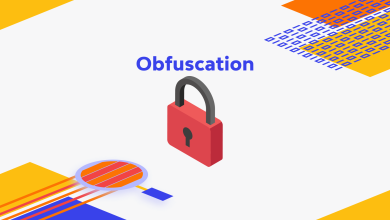What Are the Major Cybersecurity Threats Facing Businesses?

Did you know that a lot of businesses lose money from cybersecurity attacks? If you want to learn about common cybersecurity threats, we can help.
In this guide, we’ll go over significant cybersecurity threats businesses face.
Want to learn more? Keep reading.
You Might Deal With Phishing
Phishing is when someone downloads a harmful message by accident. This will look like a regular email with legit links, business names, logos, or attachments. The email’s written persuasively, so the user takes action.
It might include things like a clickbait subject line. Whale phishing is another kind of email phishing that targets company executives.
Spear-phishing will send emails to members of a business to try and steal information.
Phishing can take other forms. Smishing is when SMS messages get sent that have dangerous links included in the text. Vishing is fraudulent voice messages and phone calls where the caller sounds legitimate.
Search engine phishing is a form of phishing that’s new. Hackers make a fake website and can rank on search engine results to steal people’s information.
If a customer clicks one link, it could have devastating results for the company.
What About Malware?
Malware is malicious software that will slow down a device or stop them from working, and it can destroy the computer. Malware includes viruses, ransomware, worms, spyware, trojan malware, and adware.
Malware can enter a computer if someone clicks an infected link or a downloaded file. Someone could also click a pop-up or download an email attachment.
After malware gets released, hackers will get into your company’s files. A hacker will access credit card information, banking data, and passwords.
Ransomware
Ransomware is a kind of malware that will encrypt someone’s computer systems. Users won’t be able to access their files or systems. To reaccess the system, they will have to pay a ransom fee.
Ransom transactions will get done through Bitcoin. A cybercriminal might ask for other kinds of payment like Amazon gift cards. The cost could range from hundreds to thousands of dollars.
Ransomware will get spread through a lousy download in a phishing email. An attack can either target an entire organization or one employee.
Data Breaches
Data breaches can occur if sensitive data gets stolen from someone who isn’t the authorized owner. Confidential information can include names, email addresses, passwords, and social security numbers.
Breaches can get implemented through a network attack or point-of-sale systems.
Network attacks can occur if a cybercriminal identifies a weakness in the system. They can use the defect to break into the system.
Social attacks are also on the rise. A hacker can fool a worker into getting access to an organization’s network. They might trick someone into downloading a lousy attachment or providing their credentials.
Data breaches have been on the rise. Businesses need to take action and contain the breach and fix the issue.
Your Password Became Compromised
A compromised password can occur if a user enters their information into a fake website. Common password and username combinations will also leave you vulnerable.
Reusing passwords across many platforms will also make you more vulnerable. If a hacker guesses the password, they could get into your other accounts.
If you need to create a password, make sure you pick something complex and challenging to guess.
Teach Employees
Organizations make it a priority to teach staff how to protect against cyberattacks. You should also teach your team how to fight an attack.
Consider hiring a security manager or IT engineer if you don’t have the experience. It might be challenging to get these skills, and an in-house team will provide you with long-term accountability.
Businesses might find a freelancer or hire someone outside of their company. Protect yourself against cyber security risks.
Make Sure You Use Antivirus Software
To protect your company, make sure you use antivirus software and don’t forget to update it. All your business computers will need antivirus software.
Firm Takeover or Account Compromise
FINRA has noticed there’s been an increase in attacks on employees’ email accounts.
Fraudsters will use malware, data breaches, or phishing attacks to get log-on credentials. Then, they will execute unauthorized transactions in firm systems, credit cards, bank accounts, or financial accounts.
ACH Transactions or Fraudulent Wires
There’s also been an increase in third-party authorizations and wire requests that are fraudulent.
Most firms will have verification procedures for these wire requests. Yet, there were some instances when firms didn’t have proper safeguards in place to prevent these wires. Registered representatives didn’t follow the procedures.
How Do You Prevent Cybersecurity Threats?
Make sure you train your employees on proper security measures. Your employees should change their passwords throughout the year.
Also, try to bring in a professional to provide training on prevent cybersecurity threats. Refresh old employees on this training. Make sure new workers learn about your cybersecurity policies, as well.
Keep Learning How to Prevent Cybersecurity Threats
We hope this guide on preventing cybersecurity threats was helpful. Educate your business and employees on how to prevent cyberattacks.
It would help if you created complex password combinations for business log-in accounts. Bring in an IT professional who can assess your business. They can look for vulnerable areas.
Also, working with an IT professional is helpful because they can teach your employees about safety measures.
Are you looking for more business tips? We have resources on our blog.




